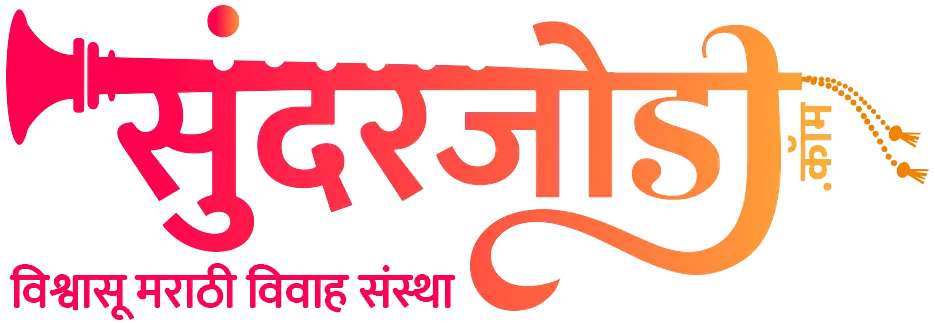


Maharashtrian weddings are the epitome of culture, tradition, and fun. The religious beliefs and values are deeply rooted in the community and reflected in their wedding traditions and attire. Traditional wedding dress is of great significance in Marathi matrimony. Over the years, with many changes taking place in the lifestyle and ideologies of the people, the Marathi community continues to wear their typical garb for their special day. So, if you are uniting with your groom in a Marathi Vivah, read on to know how to get the perfect and elegant Marathi bridal look.
The brides wear a traditional yellow or green Paithani silk saree with a classical hair bun embellished with pearls and flowers. The grooms are usually clad in a light-colored Dhoti and Kurta with white and red beaded Mundavalya, worn by both the groom and bride. The groom also carries a stole around his neck that has a thin gold border, similar to the bride’s saree. In earlier and traditional Marathi matrimony, the groom also used to wear a Nehru cap. However, millennials these days choose to skip it.
Now that we have covered the basic details of traditional attire in Marathi matrimony, let us dive deep into the details of Maharashtrian saree and jewelry:
Bridal Attire in Marathi Vivah:
Bridal Nauvari:
Nauvari, also known as Nau Vari, is a nine-yard saree worn by a Marathi bride. The name ‘Nauvari’ is inspired by the saree\\\'s nine-yard length. The drape style of the saree is what makes it different from other attires. Nauvari is draped in a trouser-like style, and the saree is tucked at the back. It comes in different bright colors, highlighted with a border that is usually in gold.
Paithani Silk Saree:
Paithani silk saree is the traditional outfit for brides that add charm to their Marathi Vivah. As the name implies, the saree has emerged from the Paithan district of Maharashtra. The saree is made of either Kanjeevaram silk or Banarasi silk, typically in green or yellow in color with a golden border. However, in recent years, brides have started experimenting with different colors. Generally, the paithani saree includes peacock or mango motifs in the pallu that adds to its overall elegance.
Silk Sheela:
Maharashtrian silk Sheela is a type of accessory that is coordinated with saree in Marathi Vivah. It is draped over the shoulder or head during rituals. Silk Sheela comes in various colors and silk variants.
Bridal Jewelry in Marathi Vivah:
Maharashtrian brides may go light with makeup but ensemble their look with an extensive variety of traditional pieces of jewelry. Gold and pearls are majorly used for the traditional look in Marathi matrimony. Many heirlooms are gifted to the bride from the groom’s family as tradition and blessings. The bridal jewelry consists of:
Mundavalya:
Mundavalya is essential in Marathi matrimony, worn by both bride and groom. They are white and red beaded ornaments tied across the forehead. Two bead strings dangle from both sides of the temples.
Kolhapuri Saaz:
Kolhapuri Saaz is an important jewelry piece for married women in Maharashtrian culture along with Mangalsutra. It indicates marital status and is set in a gold chain consisting of golden beads, leaves, and petals.
Tanmani:
Tanmani is a pearl choker with a silk string. It is an essential ornament in most Marathi matrimony.
Nath:
A Maharashtrian Nath is a nose accessory that is typical in Marathi tradition. Unlike the conventional nose rings, Marathi Nath is a long ornament embellished with pearls, beads, and precious stones like rubies or emeralds. It is one of the important pieces of jewelry for a bride in traditional Marathi Vivah.
Vaaki:
Vaaki is a golden armlet worn by the bride. Earlier, brides used to wear vaaki on both arms, but nowadays, they prefer it on just one arm.
Chooda:
Similar to the Punjabi or Sikh chooda worn by newly married women, Maharashtrian Chura is a set of glass bangles sported by Marathi brides. The difference is, unlike the other cultures that wear red bangles, Marathi brides put on green glass bangles in a series of odd numbers along with gold bangles and carved gold kadas.
Khopa:
Khopa is a decorative hair accessory for keeping the bun pinned up and tidy.
Get ready for a cultural Marathi Vivah with these simple tips:
Hairstyling:
With traditional wedding attire, you must choose a bun for your hairdo. Depending on your outfit, you can either opt for a neat plaited bun or go for a messy bun.
Makeup:
The bridal makeup needs to be complementary that highlight her beauty. Therefore, if your attire is bright in color and design, choose natural, dewy makeup. If you are opting for subtle, pastel colors for your outfit, go with bold makeup.
Footwear:
Although traditional footwear in Marathi matrimony is Kolhapuri chappal or sandals, you can also opt for heels if it goes well with your attire and comfort.
Looking for a Marathi groom or bride? Register today at Sundarjodi, one of India’s leading Marathi matrimony websites. Sundarjodi offers more than 54,000 verified profiles from 600+ castes that suit your expectations for compatibility in a life partner.
For more details, visit www.sundarjodi.com